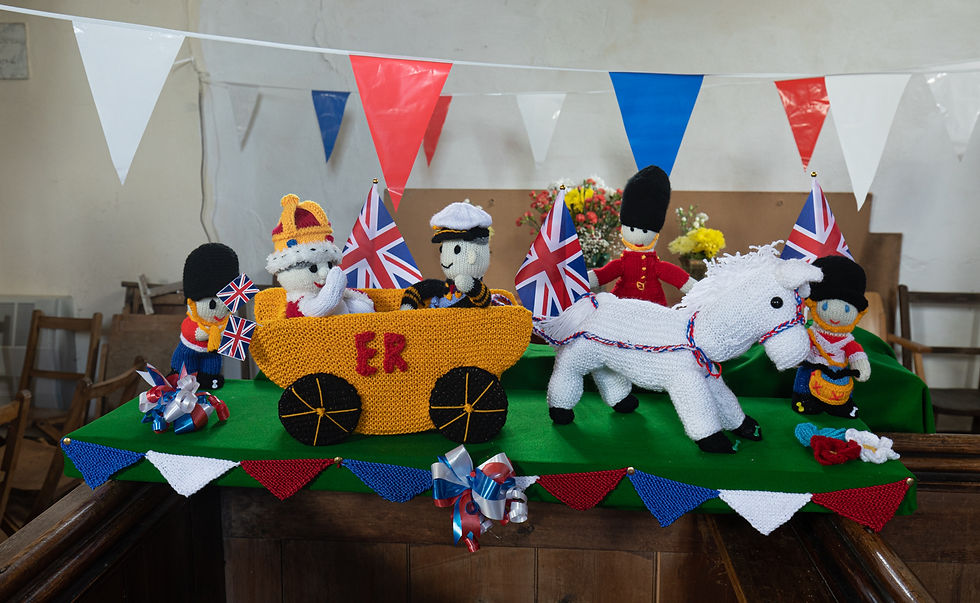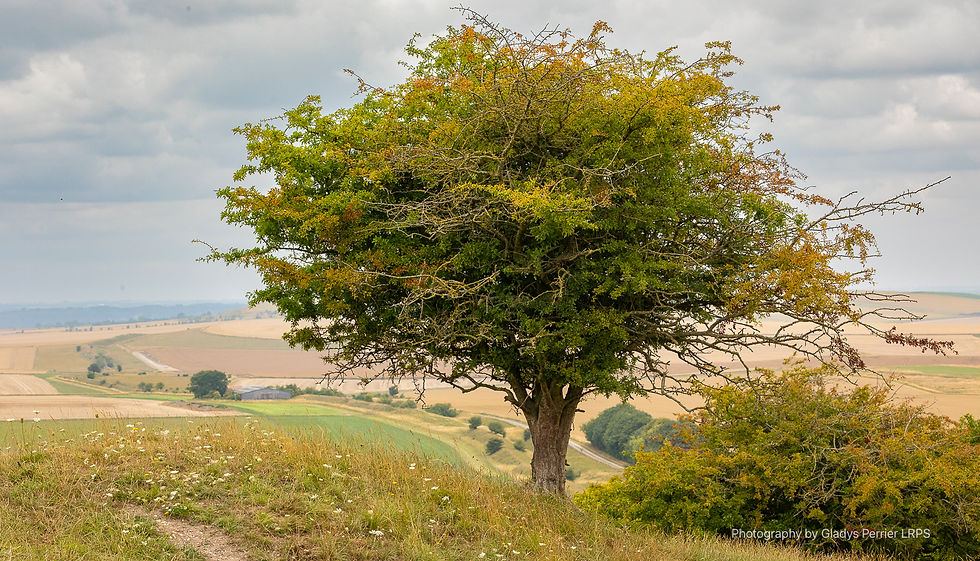Adventures along The Ridgeway National Trail - Day 4
- gladysperrier
- Jun 19, 2022
- 5 min read
Updated: Sep 6, 2022
The Ridgeway - Day 4 Streatley to Nuffield Common
On Saturday the 11th June our intrepid adventurers took to The Ridgeway again. It wasn’t until 10:40am we set off, having dropped one car at our end point, Nuffield Place and the start point of Streatley. I worried about walking in the heat of the day but in reality there was a pleasant breeze and sufficient shade that we did not feel exposed to a relentless sun.

The terrain was very different to our first three days on The Ridgeway. This time we found ourselves walking along quiet residential roads and through very quaint villages, where nobody stirred and we didn’t even detect any curtain twitching. It was uncanny. What did everyone know that we didn’t know? Why was nobody out and about?

The only signs of life was the remnants of the previous weekend’s Platinum Jubilee celebrations and a cat on a hot thatched roof, but even he seemed frozen in time.

It was a very strange sensation to have these quiet residential roads to ourselves and thinking about the close village communities and how everyone knows everyone else’s business. It wasn’t until later that we discovered that Agatha Christie lived close by for 40 years and it takes little effort to imagine village life providing her with plenty of material for her crime novels.

I was on the lookout for two photographic subjects - poppies and churchyards both of which were fulfilled to some degree. I really wanted to find poppies fields but in fact what we did find was a gorgeous verge of wildflowers including poppies, oxeyed daisies and cornflowers.

We meandered our way along the grassy paths running parallel to the Thames, where we saw barges motoring up river, paddle boarders, swimmers and canoeists. Arriving at a cross roads of river, railway and road just beyond the arches of Brunel’s spectacular bridge, we sat down on a grassy bank watching emerald damselflies dancing around the lily pads while we tucked into our much needed lunch, finishing it off with Michala’s fruity treat selection of strawberries and cherries in season.

From our bankside view we looked across at the bridge at the hound’s tooth pattern of the brick work, constructed thus on account of the viaduct being built a skew.

On we ventured along the side of the water meadows where the rising scales of the reed warblers rang out from the bulrushes.
Do not ask why Michala thought her iPhone might like to wear her sunglasses. I have no idea. She never ceases to surprise.

As if she had not had enough for lunch, I caught Michala stretching out her hand to some form of magic mushroom. She tried to tell me that her hand was there purely for scale but who is she trying to fool.

We continued along the way at a leisurely pace feeling no time constrains as we skirted wheat fields swaying in the breeze and the occasional daub of scarlet poppies.

At North Stoke we stopped to admire the church but missed a trick by not going inside. I have since read that the walls are adorned with 14th century murals. It sounds like it is worth investigating at another time.

At the end of the village we passed the disused mill and the pond over hung with willow and horsechestnut.

At Mongewell Park, on seeing signposts to a church, we made a detour. We walked passed manicured lawns and rhododendron bushes first thinking we were tresspassing onto some private estate. However, meeting a couple of dog walkers, they confirmed we were going in the right direction for the church.
Shortly after that we were filled with a chilly sensation as we looked across the river at what appeared to be abandoned buildings of what might possibly be a school. We thought the worst of what might have caused the demise of the school. It all felt very eerie but we were extremely curious.

It was not until returning home we were able to investigate and Michala dug up some interesting information. Mongewell Park is steeped in history. It was requisitioned as a hospital for wounded soldiers during WWI and in WWII used as the briefing room for operation Chastise (better known as the Dambusters Raid) and for the less successful Jericho Operation when a bombing raid was organised on a German prison in Amiens in an attempt to help some of the French resistance escape before execution. Sadly this operation did not go well. It resulted in the death of 176 prisoners of the 717 prisoners and 258 escapees of which most were recaptured shortly after.
In 1948 Mongewell Park became the site of Carmel College (the Eton of the Jewish Community). This was an endeavour to facilitate the teaching of the Orthordox Jewish culture rather than integrating into British public school life and losing a sense of origin. It was an elitist school and one of the most expensive in Europe. The school eventually became more inclusive and secular. However, when an attempt was made to return the school to its Jewish values and culture it set in motion its demise and the school eventually closed in 1997.
Unfortunately there were instances of child abuse where homesick boys were cruelty taken advantage. Fortunately the perpetrator was eventually charged but 20 years after the events. Michala and I were distinctly aware of an ominous atmosphere as we walked past derelict buildings on our way to visit St John the Baptist Church.

The church was well worth visiting. It was originally a Norman church however the nave lies in ruins with a bell tower in red brick at the west end. The east end is in Gothic style and their is a Georgian round tower. The church is no longer in use, despite the appearance of the chancel, and is being looked after by the Church Conservation Trust.

The next stretch of our walk is actually one of my favourite stretches of The Ridgeway and part that I have returned to over and over to see the bluebells in spring and the autumn colours in October and November.

We walked through narrow woodland with fields either side with tempting paths leading through wheat.

We found ourselves climbing but there was nothing particularly demanding. We walked passed Scotch pines where there was a sense of magic as the wind whispered through the pines and dappled sunlight danced. We were following Grim’s Ditch taking us along a raised path between trees and then into a sunken path.

Nearing the end of our walk we arrive at Nuffield Church where a treat awaited us. In the past I have enjoyed a cup of tea and a slice of lemon drizzle cake supplied by the parishioners to any passing walkers. However, much to our disappointment there was a sign in place stating that the church was now closed. The warden had just arrived to clean and lockup but we were in luck. He beckoned us in, offering us tea and cake with the Queen.

What a treat to find ourselves in the presence of her Majesty and her corgis.

With only a further kilometre to go our thoughts dwelt on journey’s end and how wonderful this outing had been with the variety of sights and enriching experiences, only to find that treats were by no means at an end as we found ourselves in the centre of a meadow of oxeyed daisies.


The ideal opportunity for one final selfie to make the end of yet another successful outing along The Ridgeway National Trail.
To read about our 5th day along The Ridgeway National Trail click on the link below:



Comments